Research Highlights
ACS Nano 18, 19828 (2024)
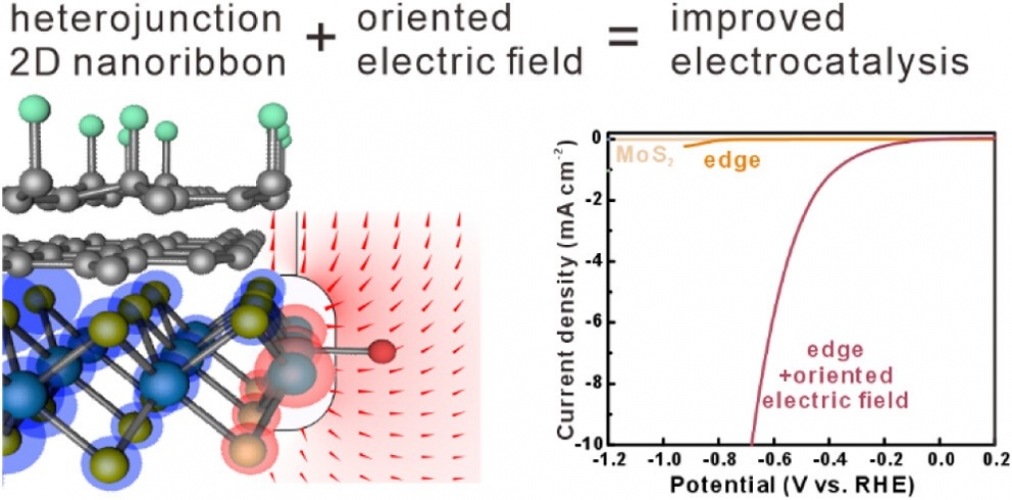
The edges of 2D materials have emerged as promising electrochemical catalyst systems, yet their performance still lags behind that of noble metals. Here, we demonstrate the potential of oriented electric fields (OEFs) to enhance the electrochemical activity of 2D materials edges. By atomically engineering the edge of a fluorographene/graphene/MoS2 heterojunction nanoribbon, strong and localized OEFs were realized as confirmed by simulations and spatially resolved spectroscopy. The observed fringing OEF results in an enhancement of the heterogeneous charge transfer rate between the edge and the electrolyte by 2 orders of magnitude according to impedance spectroscopy. Ab initio calculations indicate a field-induced decrease in the reactant adsorption energy as the origin of this improvement. We apply the OEF-enhanced edge reactivity to hydrogen evolution reactions (HER) and observe a significantly enhanced electrochemical performance, as evidenced by a 30% decrease in Tafel slope and a 3-fold enhanced turnover frequency. Our findings demonstrate the potential of OEFs for tailoring the catalytic properties of 2D material edges toward future complex reactions.
Te-I Liu*, Jhih-Shan Wang, Ai-Phuong Nguyen, Marco Raabe, Carlos Jose Quiroz Reyes, Chih-Hsin Lin, Ching-Wei Lin*
ACS Nano 18, 18534–18547 (2024).
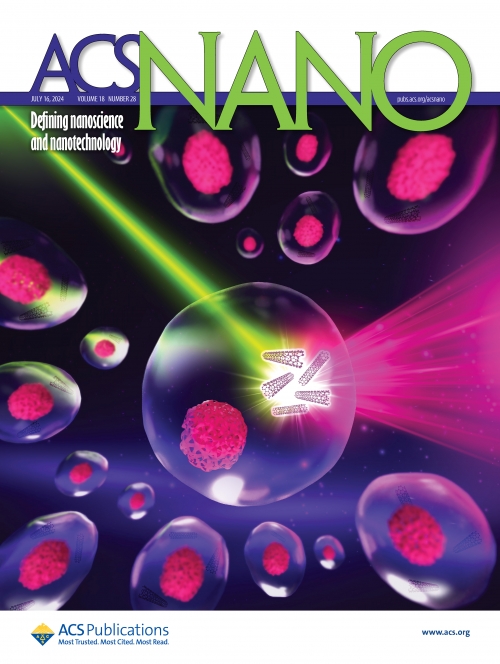
Cytometry plays a crucial role in characterizing cell properties, but its restricted optical window (400-850 nm) limits the number of stained fluorophores that can be detected simultaneously and hampers the study and utilization of short-wave infrared (SWIR; 900-1,700 nm) fluorophores in cells. Here we introduce two SWIR-based methods to address these limitations: SWIR flow cytometry and SWIR image cytometry. We develop a quantification protocol for deducing cellular fluorophore mass. Both systems achieve a limit of detection of ~0.1 fg cell−1 within a 30-min experimental timeframe, using individualized, high-purity (6,5) single-wall carbon nanotubes as a model fluorophore and macrophage-like RAW264.7 as a model cell line. This high-sensitivity feature reveals that low-dose (6,5) serves as an antioxidant, and cell morphology and oxidative stress dose-dependently correlate with (6,5) uptake. Our SWIR cytometry holds immediate applicability for existing SWIR fluorophores and offers a solution to the issue of spectral overlapping in conventional cytometry.
I-Yun Chen, Che-Wei Chang, Christa Fittschen, and Pei-Ling Luo*
J. Phys. Chem. Lett.,15, 3733–3739 (2024)
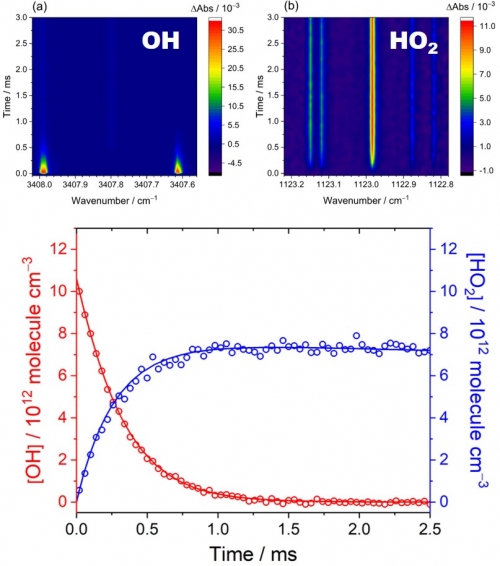
The radical–radical reaction between OH and HO2 has been considered for a long time as an important reaction in tropospheric photochemistry and combustion chemistry. However, a significant discrepancy of an order of magnitude for rate coefficients of this reaction is found between two recent experiments. Herein, we investigate the reaction OH + HO2 via direct spectral quantification of both the precursor (H2O2) and free radicals (OH and HO2) upon the 248 nm photolysis of H2O2 using infrared two-color time-resolved dual-comb spectroscopy. With quantitative and kinetic analysis of concentration profiles of both OH and HO2 at varied conditions, the rate coefficient kOH+HO2 is determined to be (1.10 ± 0.12) × 10–10 cm3 molecule–1 s–1 at 296 K. Moreover, we explore the kinetics of this reaction under conditions in the presence of water, but no enhancement in the kOH+HO2 can be observed. This work as an independent experiment plays a crucial role in revisiting this prototypical radical–radical reaction.
Dr. Hsiang-Hua Jen, Dr. Ying-Cheng Chen
(2024)
C.-H. Chien, S. Goswami, C.-C. Wu, W.-S. Hiew, Y.-C. Chen, and H. H. Jen
Quantum Sci. Tech. 9, 025020 (2024).
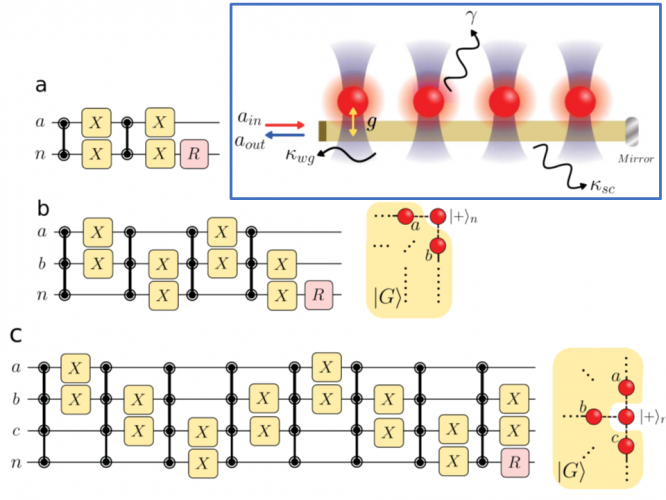
Scalable graph states are essential for measurement-based quantum computation and many entanglement-assisted applications in quantum technologies. Generation of these multipartite entangled states requires a controllable and efficient quantum device with delicate design of generation protocol. Here we propose to prepare high-fidelity and scalable graph states in one and two dimensions, which can be tailored in an atom-nanophotonic cavity via state carving technique. We propose a systematic protocol to carve out unwanted state components, which facilitates scalable graph states generations via adiabatic transport of a definite number of atoms in optical tweezers. An analysis of state fidelity is also presented, and the state preparation probability can be optimized via multiqubit state carvings and sequential single-photon probes. Our results showcase the capability of an atom-nanophotonic interface for creating graph states and pave the way toward novel problem-specific applications using scalable high-dimensional graph states with stationary qubits.
Dr. Huan-Cheng Chang
(2023)
Teng-I Yang,1 Yuen Yung Hui,1 Jen-Iu Lo,2 Yu-Wen Huang,1 Yin-Yu Lee,3 Bing-Ming Cheng,2,4,* and Huan-Cheng Chang1,5,6,*
1Institute of Atomic and Molecular Sciences, Academia Sinica, Taipei City 106319, Taiwan
2Department of Medical Research, Hualien Tzu Chi Hospital, Buddhist Tzu Chi Medical Foundation, Hualien City 970, Taiwan
3National Synchrotron Radiation Research Center, Hsinchu City 300092, Taiwan
4Tzu-Chi University of Science and Technology, Hualien City 970, Taiwan
5Department of Chemical Engineering, National Taiwan University of Science and Technology, Taipei City 106335, Taiwan
6Department of Chemistry, National Taiwan Normal University, Taipei City 106, Taiwan
Nano Lett. 23, 9811–9816 (2023).
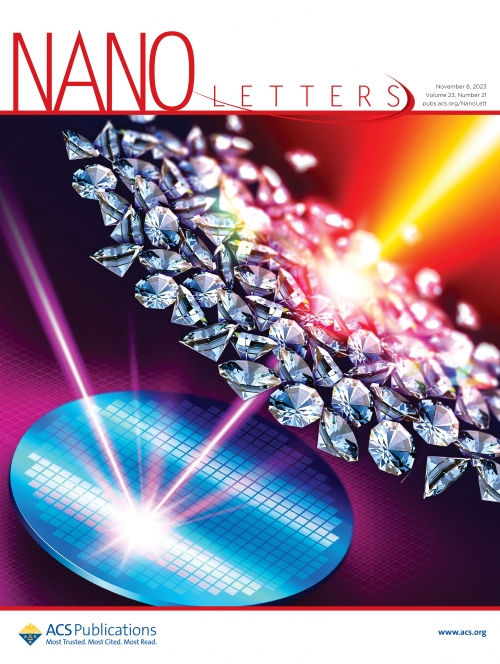
Extreme ultraviolet (EUV) radiation with wavelengths of 10 – 121 nm has drawn considerable attention recently for its use in photolithography to fabricate nanoelectronic chips. This study demonstrates, for the first time, fluorescent nanodiamonds (FNDs) with nitrogen-vacancy (NV) centers as scintillators to image and characterize EUV radiations. The FNDs employed are ~100 nm in size; they form a uniform and stable thin film on an indium tin oxide-coated slide by electrospray deposition. The film is non-hygroscopic, photostable, and can emit bright red fluorescence from NV0 centers when excited by EUV light. An FND-based imaging device has been developed and applied for beam diagnostics of 50 nm and 13.5 nm synchrotron radiations, achieving a spatial resolution of 30 μm using a film of ~1 μm thickness. The noise equivalent power density is 29 μW/cm2Hz1/2 for the 13.5 nm radiation. The method is generally applicable to imaging EUV radiations from different sources.
